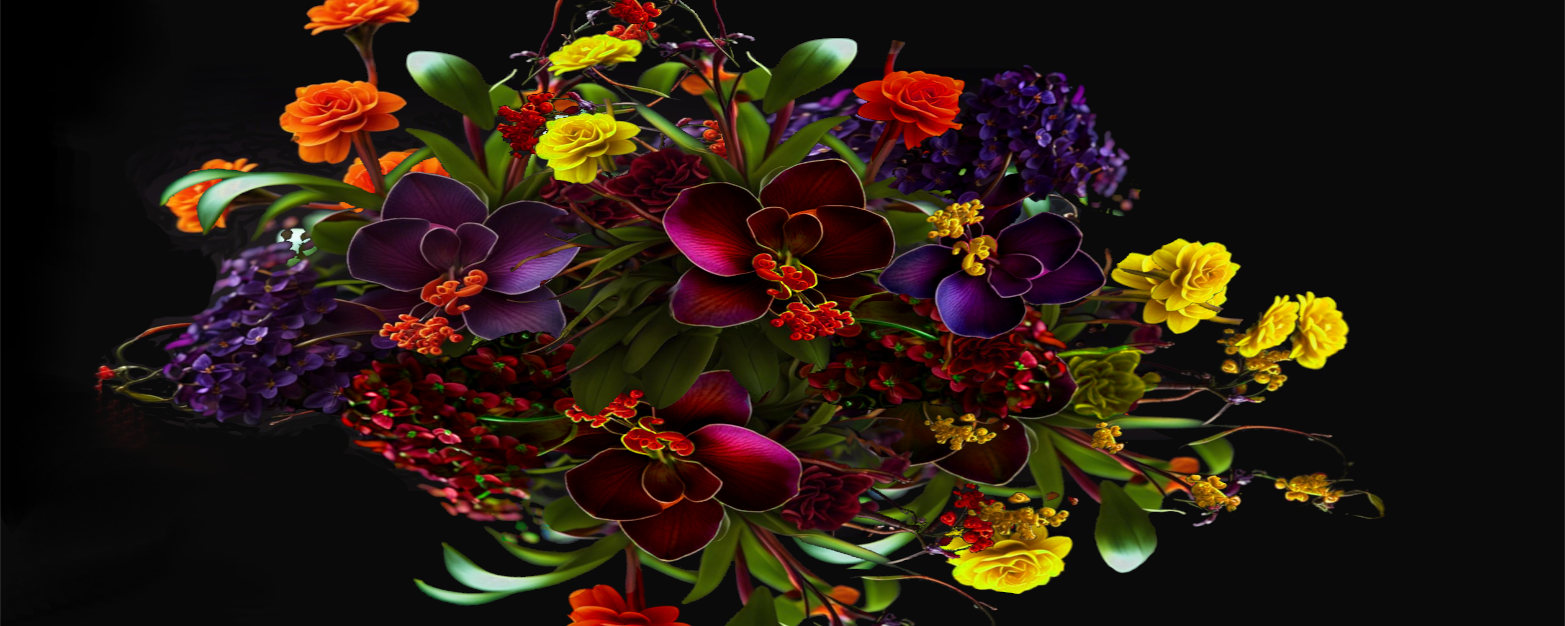The Pèryl Flower (pɛ̆ɹʲɪl)
Among Rifters and those aware of other worlds, the world known as PÈRYL derives its name from its unique and ubiquitous flower found throughout. The name for the flower and the world is the same in most regions. The flower is called pèryl /pɛ̆ɹʲɪl/ in Qh’Raa; pterl /ᵖtɚl/ and berl /bɚl/ in Ptarshakkian; behlal /bhɛhlɑl/ in Daoshi; par /bɑɚ/ and pa-erh /bɑɑr/ in Tzai-Léi; pery̆l /pɛrjijl/ in Yssian; pûryllia /bʊrjɪljɑ/ in Rellian; berlzanni /bɚldzæni/ in Ptarshaii; ibrys /ibɹjɪs/ in Kharnnish & Sarnish. The pèryl flower has numerous medicinal uses and is the source of many tinctures, potions, salves, and poultices used by wise ones, mystics, healers, and witches. The Mỳdrian pèryl flowers tend towards blood red and are planted as grave markers. The petals are harvested for memorial rites and made into bloody tisane with notes of fresh berries, pomegranate, and citrus. Blue, purple, and green pèryl flowers are also common in the Mỳdrian and into the Har alpine regions. More northerly variations tend towards yellows and whites. In Tzai-Léi pink-rose, vibrant orange, indigo, and black are found, the lattermost being the rarest and also the most difficult to cultivate. Black pèryl flowers blooms on hillocks are considered among the most significant sign of spring in many of the nations of Tzai-Léi. The seal of the Xei Haikdao shogunate is of a stylized black pèryl flower blossom in a diamond pattern on a stark white background. On the Black Isles, grey-blue pèryl flowers are the most common, the colour darkening towards navy with increase in altitude on the mountainous islands. In the Suvata wildlands are found the most vibrant and broadest variations in colour. More than a few Ptarshakkian and Ysfeti nobles have sent and lost parties in foolhardy excursions to collect rare pèryl flower variants in the Suvata. On the Tcha continent, the Kiels have cultivated indigo, grey, and red pèryl flowers for centuries, using the petals to make tea—like the Mỳdrians—but also for dyes for their famously garish coloured sashes, headwraps, and trousers. Rellia, the last continent settled by humans, has the hardest to find flowers in that the harsh acidic water and air and weakness of the soil has lead to the smallest and most stunted of flowers. However, in the dryer seasons, entire hills can be covered with iridescent blues and golds of blooming pèryl flowers, however, as few Rellians leave the confines of their city, it is a sight that few have enjoyed. Rellian rangers also collect the pèryl flowers and sell them for use in tisanes, as dyes, and for festival decorations like the Feast of Shedhyeth. The Xeccaitéin dwarves make great use of the flowers in their food, clothing, hair dress, hair and body paint. It is rare that something made by Xeccait hands is not touched of the pèryl flower at some point. In the rainy season, the Xeccait subsist on the fleshy tubers of the plant.
Basic Information
Anatomy
The Qhélssénnish triliteral root for the words five and flower is the same—√PRK—because the word flower used loosely refers to the five-petaled pèryl flowers. (Hence the scholarly name Puruk pèryl.) The shape of the flowers vary, although largely have a bilateral symetry, but always present the prominent five petal pattern. Although five is not necessarily an auspicous number, it does, by grammatic use and connotation, always imply flower generally and the pèryl in particular. Like roses, the pèryl flower has thorns. Also like roses, the petals, buds, and the rest of the plant is edible and has been used medicinally forever.
Scientific Name
Puruk pèryl
Origin/Ancestry
The pèryl flower is ubiquitous; its ultimate origin is unknown.
Conservation Status
Although regional variants (Mỳdrian red pèryl e.g.) are more common in some areas than others, the species is found universally. There are no known regions of the world where some variant of the pèryl flower exists.
Geographic Distribution
Related Organizations



Comments